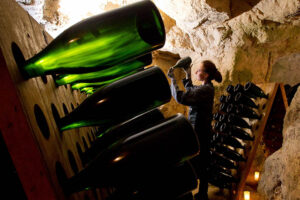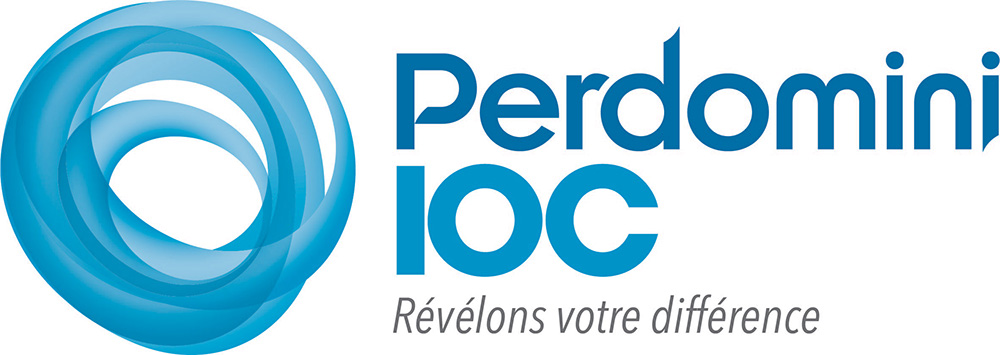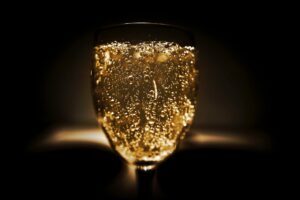With the Traditional Method, wines are made sparkling by re-fermenting a base wine in the bottle.
Tirage (the operation to bottle the base wine) is the operation which allows this secondary fermentation to take place in the bottle.
The base wine is bottled together with a liqueur de tirage (yeasts, sugar and riddling adjuvants), which leads to the formation of CO₂ and ethanol.
During the bubble formation (prise de mousse) process, the pressure inside the bottles usually reaches 6 bar (4g/l of sugar develop 1 bar of pressure; the amount of sugar added for the tirage is 24g/l).
The increase in alcohol content at the end of the prise de mousse is 1.3% vol.

What factors influence the prise de mousse?
For a successful prise de mousse, it’s very important that the base wine adheres to the following parameters:
- temperature > 10°C*
- alcohol 10 -11% vol
- H: 2,90 – 3,20.
The quantity of SO₂ – or, more precisely, free SO₂ – in the base wine should also be taken into consideration. Wines are generally well protected with SO₂ levels of around 10mg/l, with the yeast’s activity only marginally impacted, but if we exceed this threshold, the risk that fermentation will be inhibited increases (to limit the use of potassium metabisulphite, we recommend using IOC Sentinel).
The initial CO₂ levels in the base wine can also impact the prise de mousse. An initial pressure of 0.2 bar – equivalent to 0.4g/l of CO₂ – will lead to a 40% reduction in cell growth compared with a decarbonized base wine.
*secondary fermentation is very hard to set off under 10°C, while at temperatures in excess of 20°C, a stubborn deposit can form because of the high number of yeast cells in the wine.
How much yeast should be added for an optimal prise de mousse?
The Pied de Cuve starts up with 1-2 million live cells per ml. How much the yeast multiplies is strongly influenced by a number of factors (pH, SO₂ and alcohol) affecting the base wine.
When these conditions are particularly difficult, we recommend increasing the quantity of Pied de Cuve to over 3 million live cells per ml in order to compensate for the lack of cell multiplication and to prevent the onset of any difficulties at the end of the prise de mousse.
We also need to bear in mind that, during the prise de mousse, the increasing CO₂ levels and pressure limit cell growth – this is why it’s important to acclimatize the yeast by preparing a Pied de Cuve.
By following the protocol devised by Perdomini-IOC, using a quantity equivalent to 3-5% of Pied de Cuve, a sufficient cell concentration to complete the prise de mousse can be achieved.
With the Bubble Art programme, Perdomini-IOC proposes three solutions, each of which is based on a specific product (for example, riddling adjuvants) which can ensure successful start-up and completion of the prise de mousse.
Why should I add Solution ST to the liqueur de tirage?
When added before the tirage stage, Solution ST lends greater structure to the sparkling wine. Moreover, its copper sulphate content helps prevent the reduction faults that can easily arise during the vinification process. These faults have multiple causes and are usually described as resembling sulphur, rubber, rotten eggs, etc. When these defects are found in the base wine, they can be corrected by using Netarom Extra before the secondary fermentation.
Why do we recommend using clarifying agents when preparing the base wine?
Adding clarifying agents to the base wine is very important if you wish to attain a quality end product.
Depending on the sparkling wine you want to produce, it could prove very useful to use Perdomini-IOC’s Cristalline Plus or NoOx (10 – 50 g/hL). Remember that the filtration process must also be carried out carefully.
Want to find out more? Contact the Perdomini-IOC experts or your local area agent and try out our range of mannoproteins directly at your winery!





